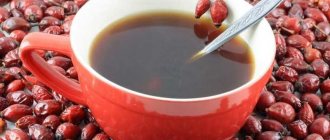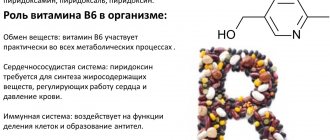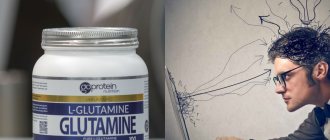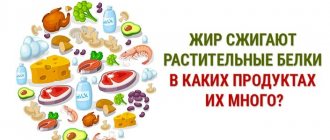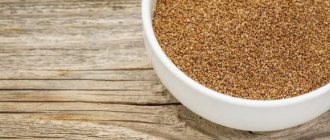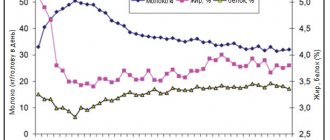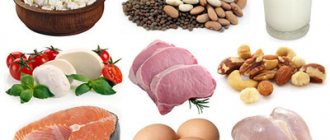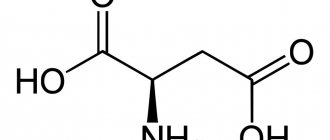What is fiber?
Fiber is a complex carbohydrate that is the building block for all vegetables, fruits and grains.
The benefit of fiber is that the body's food enzymes are unable to digest coarse fibers. This allows fiber to act as a cleaning sponge and serve as an ideal food for beneficial intestinal microflora.
Determining the amount of fiber in foods is very simple - the tougher and firmer the product, the more fiber it contains. And vice versa, the softer and more tender it is, the less it is.
Food additives and food allergies
People who are allergic to high-fiber foods have difficulty getting enough fiber. They should talk to their doctor about other sources of fiber that will not cause an allergic reaction. In some cases, fiber supplements are recommended if a person has constipation or problems passing stool. Pharmacies sell dietary supplements such as Metamucil, Citrucel and Fibercon. These foods do not provide the same levels of vitamins and nutrients as natural high-fiber foods, but they are helpful when you can't get enough fiber from your diet.
People can increase their daily fiber intake by making small changes:
- Eat fruits and vegetables with the skin on, as the skin contains a lot of fiber.
- add beans or lentils to salads, soups and side dishes
- replace white bread and pasta with whole grain options
- eat 4.5 cups of vegetables and 4.5 cups of fruit every day
Eating too much fiber can cause bloating, gas, and constipation. These side effects may occur if a person consumes more than 70 grams of fiber per day.
The benefits of fiber, the crunchy truth
The intestines are home to more than 500 species of different bacteria, numbering about 100 trillion microorganisms. This is approximately 1.3 times more than the total number of all body cells. The main part of the microflora lives in the large intestine.
This entire voracious army is divided into two types: beneficial and pathogenic bacteria.
Beneficial microflora performs a number of important functions that our body cannot take care of on its own. It inhibits the growth of viruses and pathogenic flora, regulates immune function, digests food, controls sugar levels, weight gain, vitamin production and even brain function. The cooperation is mutually beneficial, since the bacteria receive food and a comfortable living environment in return.
But what does fiber have to do with it, you ask?
The fact is that to survive and perform all these functions, microbes need energy, which they get from foods rich in fiber. Because most carbohydrates, fats and proteins are absorbed into the bloodstream before they reach the colon. And fiber reaches it almost unchanged, due to the fact that gastric enzymes are not able to digest it. While bacteria have these enzymes.
80% of all immune cells are produced in the intestines. This means that by killing microflora, we kill our immunity!
Thus, fiber promotes the growth of beneficial microflora, which protects us from many diseases. The list of all the beneficial properties has not yet been fully studied, but one thing is known for sure - without a sufficient amount of fiber, the beneficial microflora dies!!!
It has been proven that poor nutrition has a direct impact not only on well-being, but also on a person’s mood, depressing him.
A person, without knowing it, lowers his immunity and the body’s defenses. To avoid such a scenario, you need to know the beneficial properties of fiber and consume it every day.
What are the benefits of fiber?
Recent research in the field of nutrition has shown that the benefits of fiber for the human body are not only in normalizing intestinal function by accelerating the elimination of waste, but also in cleansing the body of toxins and waste.
This is why so many products made from wholemeal flour have appeared on store shelves. People consciously switch to such a diet, since “rough food” helps to lose weight and improve gastrointestinal processes.
In addition to its function as the body’s main sorbent, fiber has other beneficial properties:
- quickly fills you up, which is important when dieting.
- tames excessive appetite.
- improves the secretory functions of the stomach.
- lowers blood pressure, improving peristalsis of the large and small intestines.
- enriches the body with vitamins, minerals and other beneficial microelements.
We recommend reading: The benefits and harms of fructose, how it differs from sucrose
Bran is a champion product in terms of fiber content
Bran is a product of grain processing, which consists of outer scales, germ and particles of unsifted flour.
“The embryo is a small kernel that contains a super concentrated supply of nutrients for the growth of the future spikelet”
The benefit of bran is that it contains more than 80% of all vitamins and microelements, and the remaining 20% is in the inner shell, from which modern premium flour is made. The most useful are rye, wheat, flax and hemp bran. But why, having such beneficial properties, is bran not included in flour? How does this affect our health? Let's figure it out.
The benefits of whole grain bread
Our great-grandfathers ground grain (mainly rye, barley, oats, spelt) in windmills or by hand on stone millstones. The resulting flour, although coarse, was extremely healthy. With the development of civilization, the question arose about the duration of flour storage. Whole grain flour, although very healthy, but the fatty acids it contained quickly oxidized and gave it a bitter taste.
The great-grandfathers did not have such a problem, since they could grind the required portion at any time, and it was easier to store the grain. Incredibly nutritious and tasty bread was made from whole flour. A person could work in the field all day, having with him a piece of bread and curdled milk.
But with the advent of technical progress, they learned to separate bran from grain and obtain white refined flour. Having removed everything useful, it began to be stored longer. We received flour with ideal baking properties, due to the increased content of gluten (gluten), but an absolutely useless substance in terms of nutritional value and taste characteristics.
Which Foods Contain Fiber?
We have already mentioned foods with more fiber; Let's repeat again:
- Cereals and whole grains
- Fruits
- Vegetables
- Legumes
- Nuts and seeds
It should be noted that processed (refined) foods, such as canned vegetables and fruits, juices without pulp, white bread and pasta, and non-whole grain cereals, contain much less dietary fiber than fresh, unprocessed foods. When grains are milled, the skin (bran) is removed, which naturally reduces the fiber content. Likewise, cutting off the skins of vegetables and fruits also reduces the amount of dietary fiber in them.
Therefore, in order to provide yourself with enough dietary fiber, it is better to eat natural and fresh foods. You can also use dietary fiber supplements, although keep in mind that such supplements will not provide you with all the nutrients that can be found in regular natural foods. But they are better than nothing, of course, especially when it comes to alleviating specific problems: constipation, diarrhea, irritable bowel syndrome. You can consult your doctor about the best supplement option for your case.
Types of fiber
There are two types of dietary fiber: soluble and insoluble. The first differ from others in that they can dissolve in water and be partially absorbed by the body. For example, the pulp of an apple is soluble fiber, and the skin is insoluble. Although they are completely different in structure, they perform equally useful functions.
Insoluble fiber
The main component of fiber is cellulose. It has a porous structure and absorbs water perfectly. Coarse fiber fibers have amazing beneficial properties; they act as a washcloth, cleaning the intestinal walls from fungi and food fragments. With the help of pores, fibers absorb bacterial waste, capture bile acids, toxins and nitrates. Digestive waste increases many times in volume, which stimulates intestinal motility and their rapid removal from the body.
If waste is not removed in a timely manner, it begins to ferment and rot, providing excellent conditions for the proliferation of pathogenic microbes. The more such bacteria, the more toxins accumulate in the intestines. And those, in turn, after absorption into the blood, can cause severe headaches and deterioration in general well-being.
This all sounds quite unpleasant! But fortunately, there is a natural remedy that can easily cope with such tasks. The main thing is that there is always plenty of fresh fruits, vegetables and grains on our table.
Soluble fiber
In the intestines, water-soluble fibers take on a sticky, jelly-like form. Thanks to these beneficial astringent effects of fiber, sugars and fats are absorbed into the blood more slowly, prolonging the feeling of fullness. The gradual absorption of sugars does not increase blood glucose levels, and the absence of excess insulin production does not contribute to fat deposition. Soft jelly-like fiber helps normalize the acid-base balance, prevents flatulence and constipation.
Products rich in water-soluble fiber regulate the activity of our microflora. And if we consistently provide them with food, we are rewarded with strong immunity and excellent health.
Most water-soluble fiber is found in the pulp of raw fruits, vegetables and berries. Any heat treatment reduces the quality or destroys the fibers. I want to disappoint lovers of fresh juices; most of the vitamins and minerals, after pressing, remain in the pulp, which we simply throw away.
Tips for consuming fiber
- Do not combine with medications. Since fiber cleanses the body, it is not recommended to consume large amounts of the substance while taking medications. Treatment may not be effective.
- Do not peel vegetables and fruits. The peel and seeds contain the most dietary fiber. You need to put the apples into the juicer along with the core.
- Include it in your diet gradually. Start with small amounts and listen to how your body reacts. If you experience discomfort in any organs as the dose is increased, consult your doctor immediately.
- Drink water. If the basis of your diet consists of foods rich in fiber and dietary fiber, try to drink at least 2 liters. liquids per day.
- Eat healthy desserts. Replace sweets and cookies with dried fruits. They are distinguished by exceptional taste and high dietary fiber content.
- Use unrefined vegetable oil. This product saturates the body not only with vitamins, but also with dietary fiber. This is also a good prevention of hemorrhoids.
- Minimize food processing. Cereals do not need to be soaked before cooking; whenever possible, eat plant foods raw.
- Add bran. In porridge, muesli and baked goods. They do not change the taste of dishes, but they facilitate digestion.
Daily fiber intake
According to American experts, the daily fiber intake for a healthy person is about 38 grams. It would seem that the figure is not large, but the actual consumption figures do not exceed 15 grams per day. Which is very little!
To correct this situation, we calculated how many products contain the daily requirement of fiber:
38 grams of coarse fiber can be obtained from 90 grams of bran, or by eating 500 grams of wholemeal bread. But you must admit, eating half a loaf of bread is not the easiest task. Although, if you divide it over the whole day, then it’s quite possible. Therefore, you can replace it with buckwheat, which will need 850 grams, or apples, which only need 2 kg. Smile
The norm turned out to be not so impossible to achieve, the main thing is to diversify your diet and correctly distribute all the products throughout the day. You will find a complete list of all such products at the end of the article.
The benefits of fiber for weight loss
It would seem that no matter how many times you list the benefits of fiber, they never end. So, I want to introduce you to one more thing - the calorie content of bran is almost zero. At the same time, the content of useful substances with incredible properties is simply off the charts.
When using bran for weight loss, it is worth remembering that they can increase in the intestines up to 4 times. To avoid dehydration, you need to increase your fluid intake. Swollen fibers reduce appetite and provide a feeling of fullness for a long time. At the same time, the intestinal microflora receives its favorite nutrition, and you get a slim figure and a great mood.
Carefully monitor your grocery basket, give preference to fresh products that have undergone minimal technical and thermal processing.
For example, you can use whole grain flour for baking, eat apples with the peel, and greens should become your inseparable friend and brother.
Coarse plant fibers for weight loss
Food that is rich in fiber helps our body stay healthy and fit for as long as possible. Such foods take much longer to chew than others, which reduces the rate of food absorption. Fiber makes you feel full fairly quickly, which reduces the possible risk of overeating.
Important! Whole fruit contains more fiber than freshly squeezed or packaged juice. If you have a choice between fruit and juice, always choose the first option.
Plant fibers do not contain calories, so they are considered exclusively a dietary supplement. Fiber is good for weight loss, so many girls are interested in which foods contain the most of it. Using the table above, you can diversify your diet.
Due to the special chemical structure, plant fibers are able to linger in the stomach, which guarantees a satiating effect. In my observations, people need smaller portions of food to satisfy their hunger after taking fiber (which makes it easier to stick to a low-calorie diet). Coarse fibers pass into the duodenum in minute quantities, which smoothes out the glycemic reaction inside our body - there is no sharp increase in glucose in the blood and a jump in insulin.
In practice, the feeling of hunger does not appear so quickly. And also dietary fiber is the main source of nutrition for beneficial microorganisms that make up the intestinal flora. By activating the growth of essential bacteria, plant fibers can have a prebiotic effect. If you are interested in which foods will improve your natural microflora, then pay attention to the list of fruits and vegetables that contain a lot of fiber in their natural form.
However, taking fiber will not provide weight loss on its own. Coarse plant fibers should be used as a supplement to a balanced diet. You can add fiber to milk, kefir or juice. It quickly becomes saturated with moisture and becomes like a puree - this dish can replace dinner (minimal number of calories and great benefits for the whole body).
Tips for losing weight every day
Fresh vegetables (carrots, beets, pumpkin, cucumbers, radishes, etc.), grated, sprinkled with nuts and flax seeds, will serve as an excellent breakfast.
Green buckwheat, soaked in water overnight and seasoned with cold-pressed oil, will do wonders for your figure. Naturally, all these recommendations should work in conjunction with other measures. Regular walks in the fresh air, reasonable consumption of sweets, and most importantly, healthy sleep! All these rules should harmoniously integrate into your lifestyle and the results will not keep you waiting. If you follow these recommendations, it will be very difficult to gain weight. It is purely physically difficult to eat 2 kg of apples in a day. But even if you eat them, the sugar content in such a quantity of apples is extremely low. In addition, these are long carbohydrates that will be absorbed gradually without increasing insulin levels. Which, as you know, carefully stores all unspent carbohydrates in fat depots. In addition, apples will saturate the body with healing vitamins and microelements. What “cookies” won’t do is that if you eat a similar volume of them, you will get much more sugar and immediately enter your bloodstream.
Health Benefits of Fiber You Didn't Know About
Fiber is essential for women's health . It helps remove excess hormone estrogen. With frequent constipation, it lingers in the intestines for a long time, which leads to its reabsorption into the blood. And this, in turn, becomes the cause of tumor diseases of the genital area.
Our immunity is everything ! This is the best doctor in the world. He is able to cure any disease, even those that no doctor can handle. And most importantly, he always knows what to treat and how to treat. Our internal laboratory is capable of producing any medicine itself. But there is one BUT here - if there are no necessary ingredients or there are not enough of them, then the medicine will quickly run out, and we will have nothing to fight with.
The body's safety margin is very high; it can cope with the consequences of poor nutrition for years, remove free radicals and fight viruses. But strength and resources are not limitless. At one point, the number of calls may exceed a critical level, and then you will not be able to do without the help of specialists.
By consuming fiber daily, we become an ally of our immunity. Therefore, we supply strategically important microelements for the production of immune system cells. Just as an army is unable to fight without weapons and missiles, the body’s protective function will not be able to build immune cells without certain minerals (calcium, phosphorus, zinc, magnesium, potassium, etc.), vitamins and fatty acids.
Bran in all its characteristics resembles the effect of activated carbon. They trigger detoxification, help with flatulence and bloating, reduce the effects of a hangover, eliminate bad breath and most importantly reduce the level of bad cholesterol.
Properties of fatty tissue
There is such a thing as adipose tissue - this is a mesh layer of skin, which is penetrated by collagen fibers and is located immediately under the skin itself (dermis). This mesh contains special “lobules of fat” that form our animal or subcutaneous fat.
What is fatty tissue needed for? This is connective tissue that provides shock absorption and thermal insulation to the body. In some cases (at different stages of obesity), the weight of fatty tissue can be from 10 kg, and the localization is different in men and women. Women accumulate fatty tissue mainly in the thighs and buttocks, and men - in the chest and abdomen. According to statistics, this connective tissue reaches its greatest thickness (up to 5 cm or more) in the hips, and the smallest thickness occurs in the eyelids and genitals.
We recommend reading: The benefits and harms of millet, how millet is treated and for whom it is contraindicated
The properties of fatty tissue include the following features:
- Energy. Fat is an important source of energy reserves in the body. Fat reserves are used up during periods of intense energy expenditure or during fasting.
- Thermal insulation. Heat is lost slowly through fat, which is useful in cold climates. The thicker the layer of fat, the less a person freezes at low temperatures. However, in excess amounts, fat spoils the figure, lowers self-esteem, and, in addition, adds problems in the “heart” part. Excess weight is a prerequisite for coronary heart disease, hypertensive crisis, diabetes mellitus and even skeletal-deforming osteoarthritis.
- Protection. Fat protects all internal organs from overheating and also increases skin elasticity. Shifting in different directions, the dermis seems to “slide” over the subcutaneous fat and has much less damage.
- Accumulation. Fat is the body’s reserve for “hungry” times. In addition to the fiber itself, the body accumulates other useful substances in subcutaneous fat. For example, estrogen hormones, which are important for the sexual function of the body, as well as vitamins A, D and E.
- Production of hormones. In addition to natural accumulation, fatty tissue is capable of independently producing important hormones. For example, leptin, which is responsible in our body for the feeling of satiety, etc.
Siberian fiber
Siberian fiber is a mixture of natural biologically active additives, the main component of which is bran. But besides them, the composition includes a rich selection of dried vegetables, berries, nuts, fruits and medicinal herbs. All these components are very useful in themselves, being irreplaceable sources of vitamins and minerals.
But before you start using this drug, you should make sure that you are personally tolerant of all components and have no allergies. Also, while taking the Siberian supplement, it is worth increasing your fluid intake.
Fiber contraindications
No matter how useful fiber is, first of all it is still coarse cellulose. This can lead to unpleasant consequences if you do not follow the following recommendations:
The consumption of bran and other fiber-based supplements should be gradually introduced into your diet. Thin intestinal walls, accustomed to soft, fiber-free foods, must adapt to new foods.
It is also contraindicated to take bran for gastritis, peptic ulcers, colitis and inflammation of the gastrointestinal tract.
Excessive consumption of fiber can stimulate excessive gas formation, which stops after the body adjusts and gets used to it.
“And it’s worth remembering an important rule - you need to increase the amount of liquid you take when you include bran, seeds and dried fruits in your menu.”
Table - Products containing fiber
Modern realities are such that industrially processed products do not contain fibers; they are removed or destroyed during processing. Below is a list of natural foods that contain the most fiber.
Cereals and legumes
| The product's name | Fiber content per 100g |
| Wheat bran | 43.6 g |
| Oat bran | 15.4 g |
| Barley | 14.5 g |
| Buckwheat | 14 g |
| Rye flour (whole grain) | 13.3 g |
| Beans | 12.4 g |
| Peas | 10.7 g |
| Chickpeas | 9.9 g |
| Rice (unpolished) | 9.7 g |
| Wheat flour (whole grain) | 9.3 g |
| Pearl barley | 7.8 g |
| Oat flakes "Hercules" | 6 g |
| Green peas (fresh) | 5.5 g |
| Premium flour pasta | 3.7 g |
| Premium wheat flour | 3.5 g |
Seeds and nuts
| The product's name | Fiber content per 100g |
| Flax seeds | 27 g |
| Pistachios | 10.6 g |
| Peanut | 8.1 g |
| Almond | 7 g |
| Walnut | 6.1 g |
| Hazelnut | 6 g |
| Sesame | 5.6 g |
| Sunflower seeds | 5 g |
| Pine nut | 3.7 g |
Vegetables
| The product's name | Fiber content per 100g |
| Horseradish (root) | 7.3 g |
| Parsnip (root) | 4.5 g |
| Jerusalem artichoke | 4.5 g |
| Brussels sprouts | 4.2 g |
| Parsley (root) | 3.2 g |
| Bulb onions | 3 g |
| Broccoli | 2.6 g |
| Cilantro (greens) | 2.8 g |
| Dill (greens) | 2.8 g |
| Eggplant | 2.5 g |
| Carrot | 2.4 g |
| Beet | 2.5 g |
| Ginger (root) | 2 g |
| White cabbage | 2 g |
| Parsley (greens) | 2.1 g |
| Black radish | 2.1 g |
| Pumpkin | 2 g |
| Turnip | 1.9 g |
| Celery (greens) | 1.8 g |
| Potato | 1.4 g |
| Pomodoro (tomato) | 1.4 g |
| Radish | 1.6 g |
| Zucchini | 1 g |
| Cucumber | 1 g |
| Sea kale | 0.6 g |
Fruits and berries
| The product's name | Fiber content per 100g |
| Dried figs | 18.2 g |
| Dried apricots | 18 g |
| Dried apples | 14.9 g |
| Rose hip | 10.8 g |
| Raisin | 9.6 g |
| Prunes | 9 g |
| Avocado | 6.7 g |
| Feijoa | 6.4 g |
| Currant | 4.8 g |
| Raspberries | 3.7 g |
| Cranberry | 3.3 g |
| Gooseberry | 3.4 g |
| Blueberry | 3.1 g |
| Pear | 2.8 g |
| Fresh figs | 2.5 g |
| Apricot | 2.1 g |
| Orange | 2.2 g |
| Strawberries | 2.2 g |
| Banana | 1.7 g |
| Cherry | 1.8 g |
| Apples | 1.8 g |
| Grape | 1.6 g |
| Watermelon | 0.4 g |
Results of getting to know fiber
The benefit of fiber is that it is the main friend of the immune system, helping to fight pathogenic microflora and retain toxins, preventing them from being absorbed into the blood. Regulates blood sugar and cholesterol levels.
Normalizes peristalsis, cleanses the intestinal walls, preventing constipation, hemorrhoids and flatulence. He is the main player who will never allow cancer on his field.
Normalizes metabolism and promotes weight loss. Provides us with valuable minerals, fats, vitamins and minerals. Improves the overall well-being of the entire body and prolongs youth.
And all this is the result of the work of ordinary fiber. As many people as possible should know about its advantages.
Be healthy!
Article on Yandex.Zen


